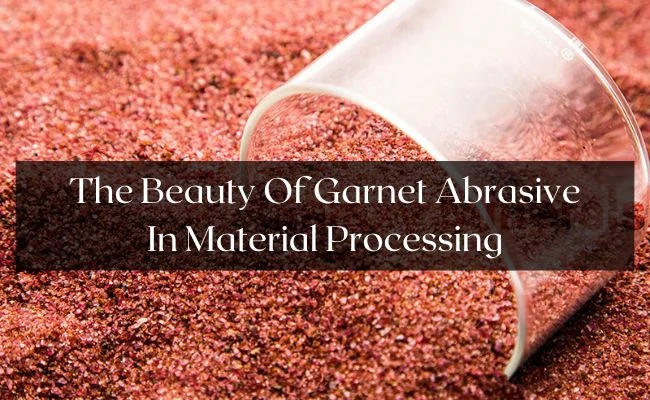Garnet abrasives have become indispensable across a wide array of industries due to their versatility, durability, and environmental benefits. Known for their hardness and high density, garnet abrasives offer a unique combination of attributes, making them an ideal solution for numerous applications. Below, we explore the distinct advantages and various uses of garnet abrasives.
What Are Garnet Abrasives?
Garnet abrasives are naturally occurring minerals derived from the garnet group of silicate minerals. These minerals crystallize under intense heat and pressure, giving garnet its characteristic toughness and angular grains. Garnet abrasives are widely valued for their hardness, which makes them suitable for demanding applications, including surface preparation, waterjet cutting, and polishing. The most common types used in industry include almandine and andradite, both of which offer different levels of hardness and performance.
Advantages of Garnet Abrasives
The properties of garnet abrasives make them an attractive alternative to traditional materials like silica sand or aluminum oxide. Key advantages include:
- Hardness and Durability: Garnet is significantly harder than silica, allowing for faster cutting and longer usage life.
- Low Dust Emission: Unlike silica sand, which can release harmful dust particles, garnet abrasives minimize air contamination and are safer to handle.
- Environmentally Friendly: Garnet is a non-toxic, inert material that can often be recycled, reducing overall waste in industrial processes.
- High Cutting Speed: Its sharp, angular grains provide excellent cutting speed, making it highly efficient for blasting and cutting operations.
Applications of Garnet Abrasives
Thanks to its versatility, garnet abrasives are utilized in numerous industrial applications. Some of the most common include:
- Sandblasting: Garnet is a highly effective abrasive blasting material used to clean surfaces, remove paint, rust, and other contaminants. It provides a smooth, uniform finish without embedding into the surface.
- Waterjet Cutting: In precision industries such as aerospace and automotive, garnet is frequently used as a cutting media in waterjet cutting machines, providing a precise and smooth cut without thermal damage.
- Polishing and Finishing: Garnet’s sharp-edged particles make it an ideal abrasive for polishing, providing a superior finish on metals, glass, and plastics.
- Filtration: Due to its high specific gravity, garnet is also used as a filtration medium in industrial water treatment plants.
Garnet Abrasives in Sandblasting
When it comes to sandblasting, garnet abrasives offer a safer and more efficient alternative to traditional sand. The angular grains of garnet provide excellent cleaning power, cutting through layers of rust, old paint, or other surface contaminants with precision. Additionally, the dust levels produced during blasting are minimal, making it an excellent choice for maintaining worker safety. This feature also reduces the need for extensive clean-up afterward.
Garnet Abrasives in Waterjet Cutting
Garnet abrasives are a popular choice for waterjet cutting, especially when working with sensitive materials that require a cool cutting process. Garnet's hardness allows it to slice through materials such as metal, stone, and composites with extreme accuracy and minimal kerf. This minimizes material wastage and ensures a clean edge, making garnet an essential component in waterjet systems.
Environmental Considerations
In an era where sustainability and environmental consciousness are increasingly critical, garnet abrasives provide a greener option. As a naturally occurring mineral, garnet does not release harmful chemicals into the environment. Furthermore, its recyclability allows it to be reused multiple times before being disposed of, reducing the overall environmental impact of industrial processes.
Choosing the Right Garnet Abrasive
Selecting the appropriate grade of garnet abrasive depends on the specific application requirements. For coarse blasting, a larger grit size may be preferred, while finer grits are suitable for delicate polishing tasks. It is essential to assess the substrate material, desired surface finish, and whether recycling of the abrasive is required before making a decision.
Conclusion
Garnet abrasives offer numerous advantages, from their high cutting speed and low dust emissions to their environmental benefits and recyclability. Whether for sandblasting, waterjet cutting, or polishing, garnet abrasives continue to be a reliable and sustainable choice for industries across the globe.
